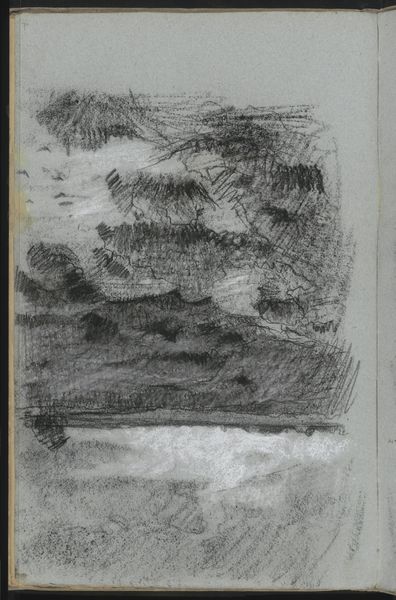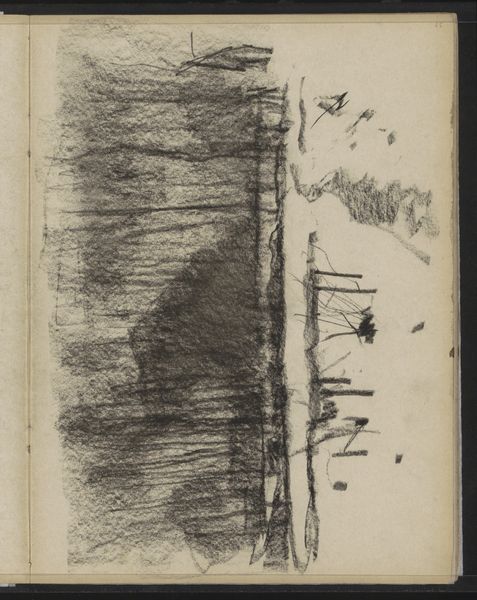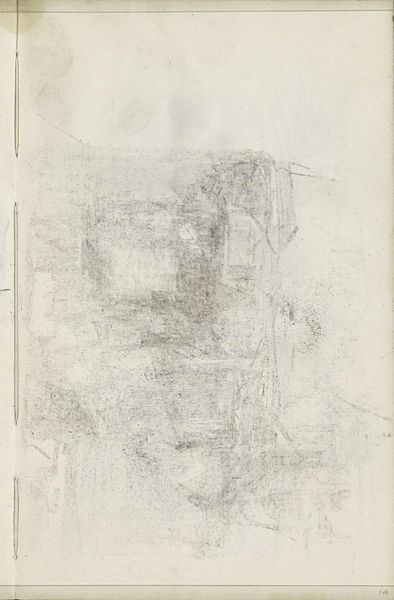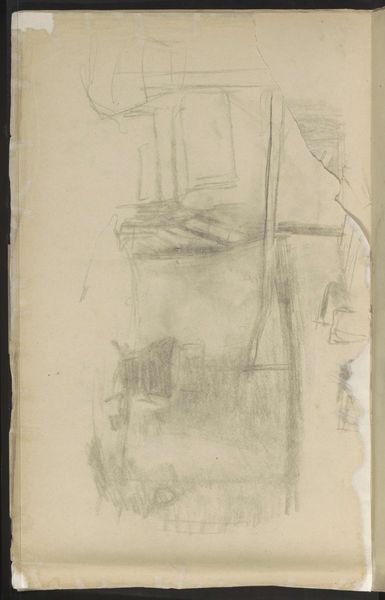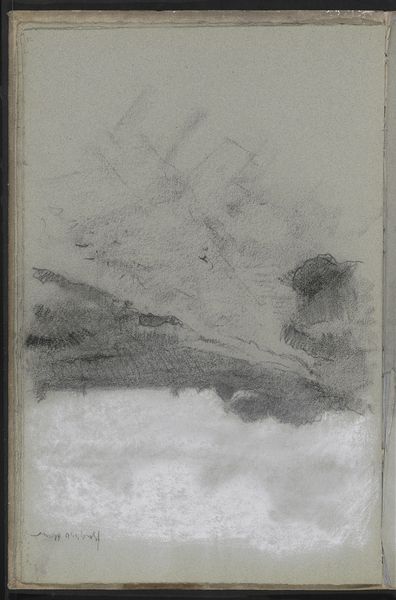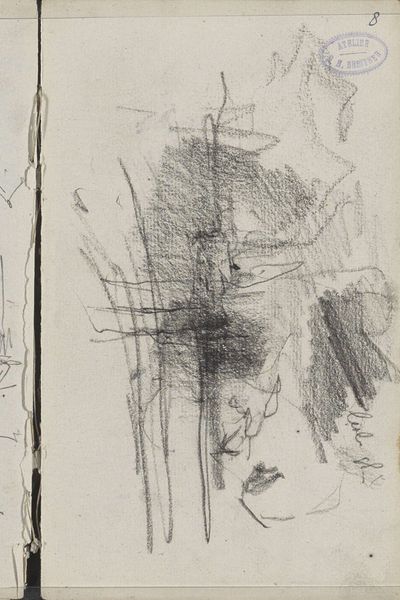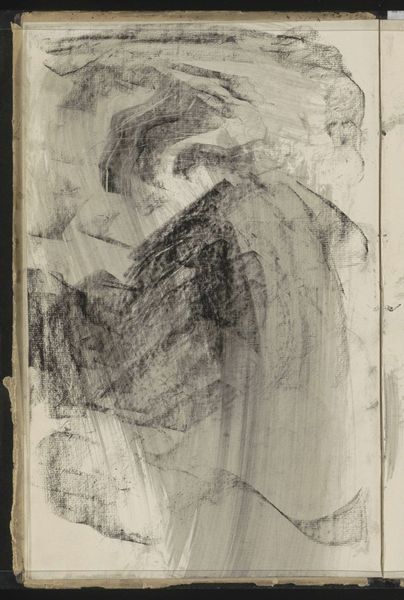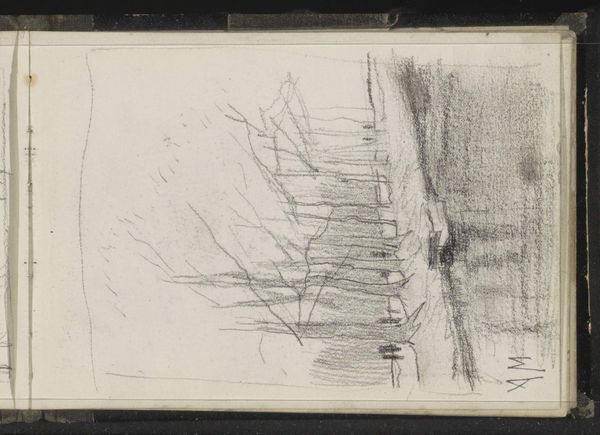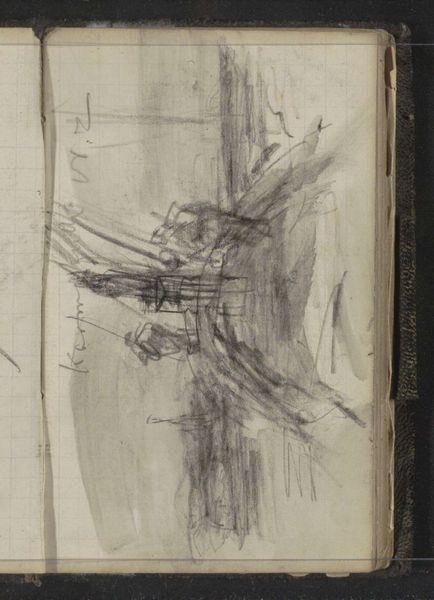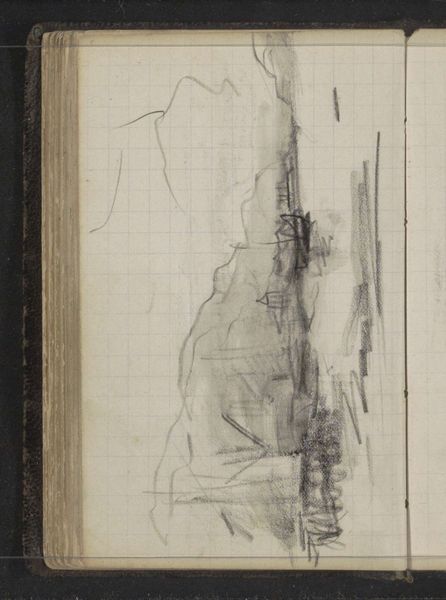
drawing, graphite
#
drawing
#
impressionism
#
landscape
#
coloured pencil
#
graphite
Copyright: Rijks Museum: Open Domain
Curator: Here we have Willem Witsen's "Landschap met water," a landscape scene rendered in graphite and colored pencil, likely dating from around 1884 to 1887. Editor: My first impression is of something quite understated, even mournful. The soft gradations of gray evoke a sense of stillness, of a moment captured just before dawn. Curator: The application of graphite is indeed quite delicate. Notice how Witsen uses layering and subtle variations in pressure to create depth and texture. The lack of distinct lines lends the composition an almost dreamlike quality, mirroring the artist’s focus on capturing fleeting atmospheric effects. Editor: And within the broader context of landscape art at the time, how does this piece engage with, or perhaps challenge, prevailing artistic conventions? It seems to lack the grandeur or the explicitly nationalistic messaging of its contemporaries. Curator: Precisely. This artwork seems more focused on the intimate, subjective experience of a particular place. It departs from the conventions of idealized landscape painting, turning inward to explore more private sentiments tied to memory and emotion. In Dutch art historical discourse of the time, capturing subjective impressions aligns it with the then emergent sensibility tied to Impressionism. Editor: Thinking about the potential viewers, how might they have reacted to such a subdued depiction? I'm thinking about the place of this work in the public exhibitions, its potential impact on popular taste or critical discussion… Curator: At the time, many were resistant to this more atmospheric and less picturesque rendering of landscapes. Public acceptance, shaped by academic traditions, preferred detailed and celebratory scenes. Editor: This dialogue offers a compelling opportunity to rethink the usual canons, even when regarding artists working within traditions of genre paintings. The art invites contemplation regarding the shifting tides of public expectation and subjective expression. Curator: Agreed. Its intimate scale invites prolonged engagement, fostering a closer relationship with the viewer—allowing for a more contemplative and personal viewing experience.
Comments
No comments
Be the first to comment and join the conversation on the ultimate creative platform.
